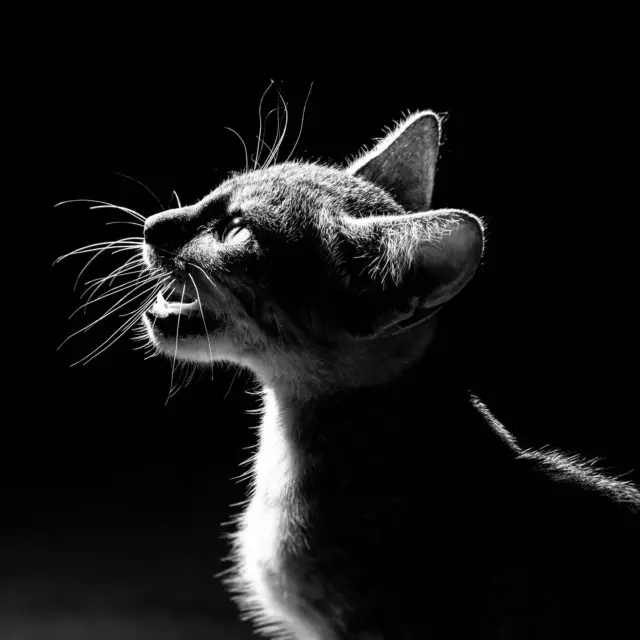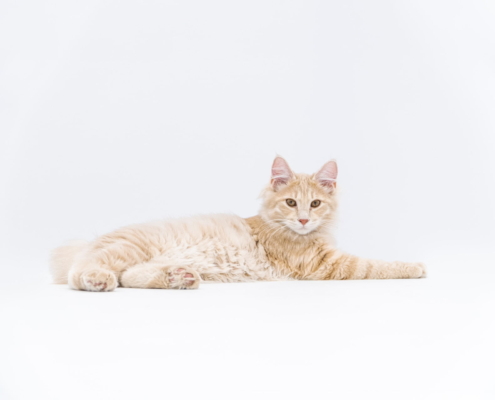
Cats are fascinating creatures with a wide range of vocalizations that they use to communicate with their owners and other animals. From the soft purrs of contentment to the sharp hisses of warning, each meow, chirp, and growl conveys a distinct message. By understanding the science behind cat vocalizations, you can deepen your bond with your feline friend and provide them with the care they need.
The Different Types of Cat Vocalizations
Before we delve into why your cat meows when you exit the room, it’s essential to familiarize yourself with the various types of vocalizations your cat may use. Cats have an extensive repertoire of sounds, each serving a specific purpose.
- Meowing: Meowing is a versatile vocalization that cats use primarily to communicate with humans. It can signify a variety of needs, such as hunger, attention-seeking, or a desire to go outside. The tone, pitch, and duration of the meow can provide clues about what your cat is trying to convey.
- Purring: Purring is a unique vocalization that cats produce when they’re content and relaxed. It’s a soothing sound that serves as a form of self-soothing for cats and can also signal their affection towards their human companions.
- Hissing: Hissing is a defensive vocalization that cats use when they feel threatened or scared. It’s often accompanied by other body language cues, such as arched backs, flattened ears, and a puffed-up tail. Hissing serves as a warning to potential aggressors to stay away.
- Chirping: Chirping is a peculiar vocalization that cats often make when they’re excited or observing prey. It’s a high-pitched sound that mimics the chirping of birds and is thought to be a hunting instinct inherited from their wild ancestors.
Decoding Your Cat’s Meows
Now that you’re familiar with the different types of vocalizations your cat can make let’s focus on meowing, specifically why your cat meows when you exit the room. Every cat’s meow is unique, and understanding the underlying reasons behind this behavior can help you address their needs effectively.
- Attention-Seeking: One common reason your cat may meow when you leave the room is to get your attention. Cats are highly social animals and crave interaction with their owners. If they feel lonely or want to play, they may vocalize to let you know they want you to come back.
- Separation Anxiety: Some cats experience separation anxiety, which can manifest as excessive meowing when their owners are out of sight. These cats may become distressed or anxious when left alone, and meowing is their way of expressing their discomfort.
- Routine and Habits: Cats are creatures of habit, and they thrive on routine. If your cat has become accustomed to having you around at certain times of the day, they may meow when you leave the room simply because they’re used to your presence and want you to return.
Understanding the Science Behind Cat Vocalizations
Cat vocalizations are not random; they serve a purpose and are deeply rooted in their evolutionary history. The science behind these vocalizations lies in the complex interplay between their instincts, emotions, and communication needs.
- Evolutionary Significance: Vocalizations are an essential part of a cat’s survival toolkit. In the wild, cats communicate with each other using a variety of vocalizations to establish territory, attract mates, and warn other cats of potential threats.
- Emotional Expression: Cats use vocalizations to express a range of emotions, including fear, contentment, and affection. By meowing when you exit the room, your cat may be expressing their desire for companionship or their fear of being left alone.
- Human-Cat Bonding: Cats have learned to adapt their vocalizations to communicate with humans effectively. By meowing, they can capture our attention and convey their needs and desires, strengthening the bond between human and feline.
Why Does Your Cat Meow When You Exit the Room?
There can be several reasons why your cat meows when you exit the room. One possibility is that your cat simply misses your presence and wants you to return. Cats form strong attachments to their owners and can become distressed when separated for extended periods.
Another reason could be separation anxiety. Just like humans, some cats experience anxiety when left alone. Excessive meowing can be a symptom of this anxiety, and your cat may be seeking reassurance and comfort by vocalizing their distress.
Additionally, your cat’s meowing when you leave the room may be a learned behavior. If your cat has successfully received attention or rewards in the past by meowing, they may continue to use this vocalization as a means to get what they want.
The Role of Separation Anxiety in Cat Vocalizations
Separation anxiety is a common issue among cats and can manifest in various ways, including excessive meowing. Cats with separation anxiety may exhibit other signs of distress, such as destructive behavior, inappropriate urination, or excessive grooming.
To determine if your cat’s meowing is due to separation anxiety, observe their behavior when you’re about to leave the room. Signs of anxiety may include pacing, excessive vocalization, or clinginess. If you suspect separation anxiety, it’s essential to consult with a veterinarian or professional animal behaviorist to develop a tailored treatment plan.
How to Address Excessive Meowing When You Leave the Room
If your cat’s meowing becomes excessive or bothersome, there are several strategies you can employ to address this behavior and provide your cat with comfort and reassurance.
- Gradual Desensitization: Help your cat become more comfortable with being alone by gradually increasing the duration of your departures. Start with short periods and gradually extend the time you spend away. Provide distractions, such as interactive toys or puzzle feeders, to keep your cat occupied during your absence.
- Environmental Enrichment: Create a stimulating environment for your cat by providing toys, scratching posts, and hiding spots. Engage them in interactive play sessions to keep them mentally and physically stimulated. This can help alleviate boredom and reduce excessive meowing.
- Establish a Routine: Cats thrive on routine, so establish a consistent daily schedule that includes designated playtime, feeding times, and quiet time. Predictability can help alleviate anxiety and provide your cat with a sense of security.
Tips for Creating a Comforting Environment for Your Cat
Creating a comforting environment for your cat is crucial in reducing excessive meowing and promoting their overall well-being. Here are some tips to make your home a safe and comforting space for your feline friend:
- Provide Vertical Space: Cats love to perch and observe their surroundings from an elevated position. Install cat trees or shelves to give your cat vertical space, allowing them to feel safe and secure.
- Safe Hiding Spots: Cats need a place where they can retreat when they feel overwhelmed or anxious. Provide hiding spots, such as cozy beds or covered cat condos, where your cat can seek solace.
- Calming Pheromones: Consider using synthetic pheromone sprays or diffusers, such as Feliway, which can help create a calming environment for your cat. These products mimic natural feline pheromones and can help reduce anxiety and excessive meowing.
Seeking Professional Help for Excessive Meowing
If your cat’s excessive meowing persists despite your best efforts, it may be beneficial to seek professional help. A veterinarian or professional animal behaviorist can assess your cat’s behavior, rule out any underlying medical conditions, and provide guidance on behavior modification techniques.
Remember, excessive meowing can be a sign of underlying medical issues, so it’s essential to have your cat thoroughly examined by a veterinarian to rule out any potential health concerns.
Strengthening the Bond With Your Cat Through Understanding Their Vocalizations
Understanding your cat’s vocalizations is key to strengthening the bond between you and your feline companion. By decoding their meows, you can better address their needs and provide them with a nurturing environment where they feel safe and secure.
Remember, each cat is unique, and their vocalizations may vary. Take the time to observe and understand your cat’s individual communication style, and respond accordingly. Through patience, understanding, and a willingness to adapt, you can create a harmonious relationship with your cat based on trust and mutual understanding.
So the next time your cat meows when you exit the room, take a moment to listen and respond with love and care. Your cat will appreciate your efforts, and your bond will grow stronger as a result.
If you enjoyed my article, I would appreciate you sharing it with your network.

Sima Ndlebe
Sima writes for CatBuzz. He is interested in Cats, Health and Fitness, and Entrepreneurship.
Published: 6 December 2023




